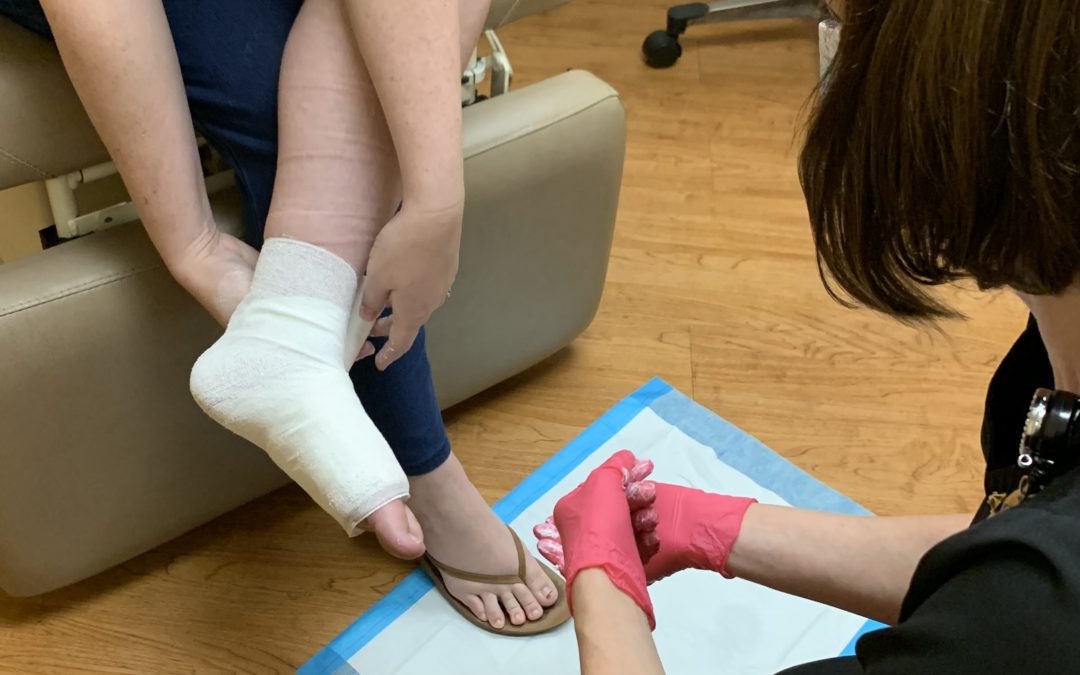It’s happening more and more often. Patients have such high co-pays and deductibles that the basic things needed for wound management are becoming unaffordable. I am seeing this with private pay insurance and with Medicare Advantage plans (see more about this in “Tales of the Medicare Disadvantaged,” Part 1 and Part 2).
Above is pictured a patient who has a $400 copay for a compression bandage. And this is one of my nurses making sure the patient is properly applying her own compression bandage. In the case of this patient, dressing supplies were covered by her insurance so we were able to order her compression bandages from a DME. The patient will apply them herself and then I will follow up at intervals.
It’s fortunate that the patient is relatively young and limber. The majority of patients seen in wound centers could never apply a compression bandage themselves, because they are too limited in their activities of daily living (ADLs), as we showed back in 2007 when one of the regional Medicare payers decided that compression bandages were just like any other dressing and could be self-applied. The study we did on ADL’s in patients with venous leg ulcers.
I am not sure what I am going to do as more and more patients arrive in the wound center with crippling deductibles and co-pays that preclude my providing the most basic things. In some cases, surgical dressings are not covered for their wounds. I will have more to say about that later.
I am curious if you are seeing this in your own practice? I’d love to hear more details from you.
Limitations of Daily Living Activities in Patients With Venous Stasis Ulcers Undergoing Compression Bandaging: Problems With the Concept of Self-bandaging. Fife, Walker, Thomson, Carter; Wounds 2007 Oct;19(10):255-7.

Dr. Fife is a world renowned wound care physician dedicated to improving patient outcomes through quality driven care. Please visit my blog at CarolineFifeMD.com and my Youtube channel at https://www.youtube.com/c/carolinefifemd/videos
The opinions, comments, and content expressed or implied in my statements are solely my own and do not necessarily reflect the position or views of Intellicure or any of the boards on which I serve.




We see this everyday in our clinic. The Medicare Disadvantage plans are the worst about it. It seems like we can’t even provide the standard of care because of the copays and deductibles patients are having to meet. My concerns over having patients change their own wraps, unskilled family changing it, and self-managing potential complications are huge.